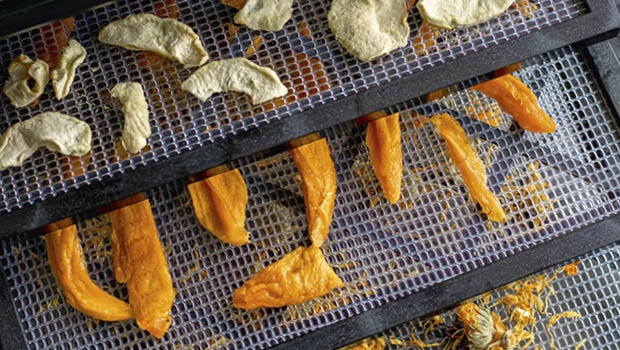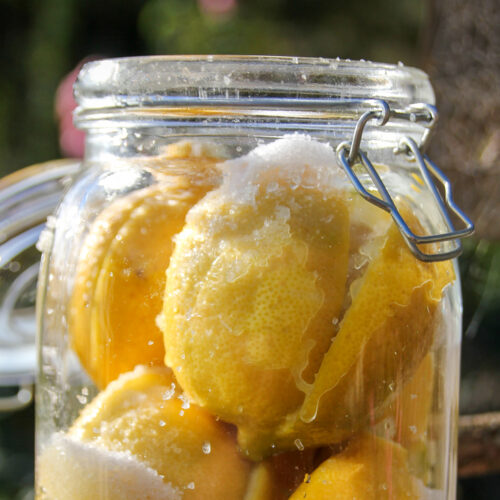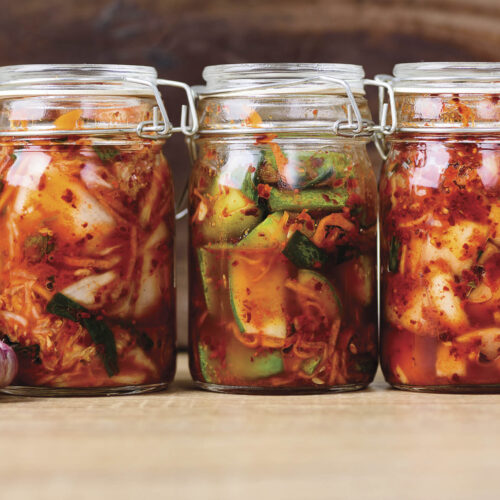Dehydrating food
2021-02-03T01:22:19+11:00
How to preserve food and extend your harvest by dehydrating your fruit and veg.
In his book The Artisan Kitchen, chef and sustainable living expert James Strawbridge shows how to use age-old techniques such as preserving and fermenting to make the best of produce. Here, learn the basics of dehydrating.
Skill level: easy
Timing: 4–12 hours, depending on produce and drying method
THE SCIENCE
Moisture extraction
Drying food is as simple as it sounds. The basic technique is to thinly slice produce to maximise its surface area so that warm air can pass over it and draw out moisture, thus preventing the growth of unwanted bacteria. The key to effective drying is good air circulation, a constant temperature, and avoiding direct contact with moisture. The result is an intense experience, as the flavours have been packed together closely in the drying process.
Preparation
Pre-treating produce before dehydrating isn’t essential but may help maintain colour, nutrients and texture. For example, coating apples or pears in lemon juice will avoid browning, since the ascorbic acid creates a barrier between the enzymes in the flesh and the oxygen, slowing the oxidisation process that leads to browning. Tough-skinned veg and fruit with a natural protective wax, on the other hand, benefit from blanching. This thermal treatment increases the permeability of cell membranes, which in turn increases the rate of moisture removal. It also destroys the enzymes that would otherwise survive the dehydration process and cause the food to deteriorate. Meat and fish, which have a high moisture content, generally require brining or dry-salt curing first – the salt draws out much of the moisture by osmosis, speeding up the drying process and inhibiting surface microbes.
Conditions
Controlling the temperature during dehydration is vital. The aim is to remove moisture as quickly as possible without affecting the flavour, texture and nutritional value of the produce. If the heat is too high, food may case-harden, meaning it will feel dry on the outside, yet moisture will still be trapped inside. If the temperature is too low, the drying time is significantly increased and bacteria may survive and multiply before the food has dried.
This is an edited extract from The Artisan Kitchen by James Strawbridge (Dorling Kindersley & Penguin Random House). Photography by John Hersey.






